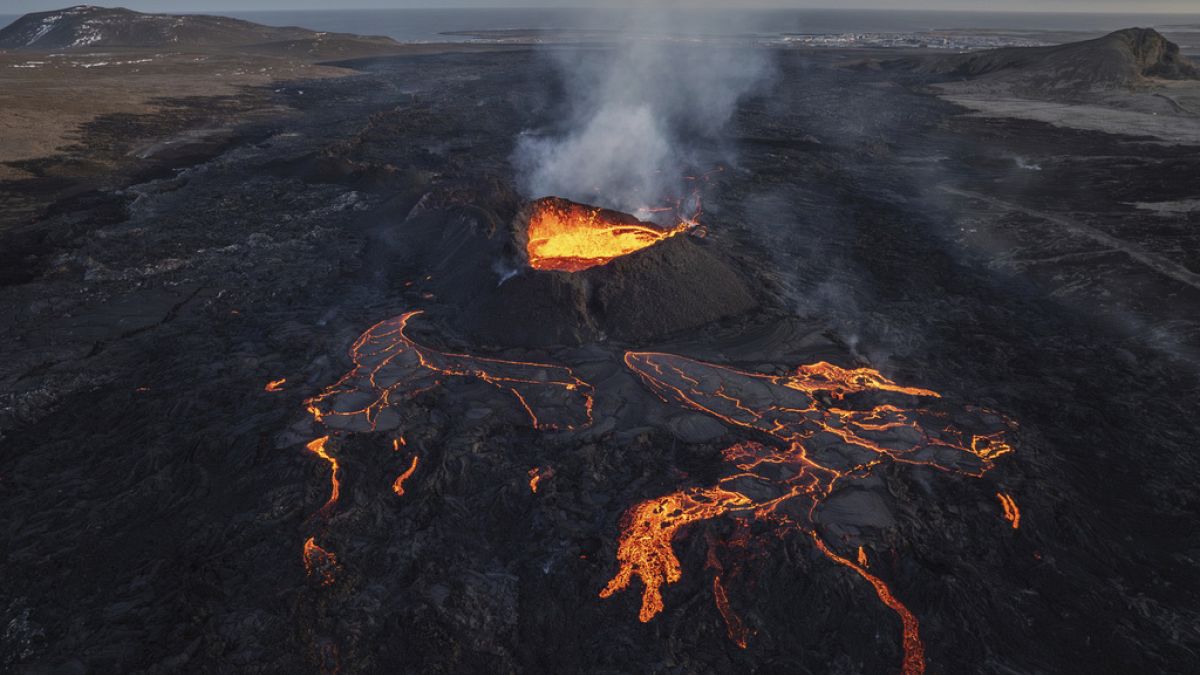
A volcano in Iceland that has erupted multiple times since December continued to spew out lava on Tuesday.
The crater concerned is located a few kilometres northeast of the town of Grindavik. The active lava flow was confined close to the volcanic cone, officials said, at a safe distance from any infrastructure.
Iceland’s civil defence has lowered the level of alert for the area from emergency level to danger level.
Grindavik, a coastal town of 3,800 people about 50 kilometres southwest of Iceland’s capital, Reykjavik, was evacuated in November when the Svartsengi volcanic system awakened after almost 800 years with a series of earthquakes that opened large cracks in the ground north of the town.
The volcano eventually erupted on December 18, sending lava flowing away from Grindavik, while a second eruption that began on January 14 sent lava toward the town. Defensive walls that had been bolstered after the first eruption stopped some of the flow, but several buildings were consumed by the lava.
Both eruptions lasted only a matter of days.
A third eruption began February 8. It petered out within hours, but not before a river of lava engulfed a pipeline, cutting off heat and hot water to thousands of people. Yet another eruption followed on March 16.
Iceland, which sits above a volcanic hot spot in the North Atlantic, sees regular eruptions and is highly experienced at dealing with them.
The most disruptive in recent times was the 2010 eruption of the Eyjafjallajökull volcano, which spewed huge clouds of ash into the atmosphere and led to widespread airspace closures over Europe.





